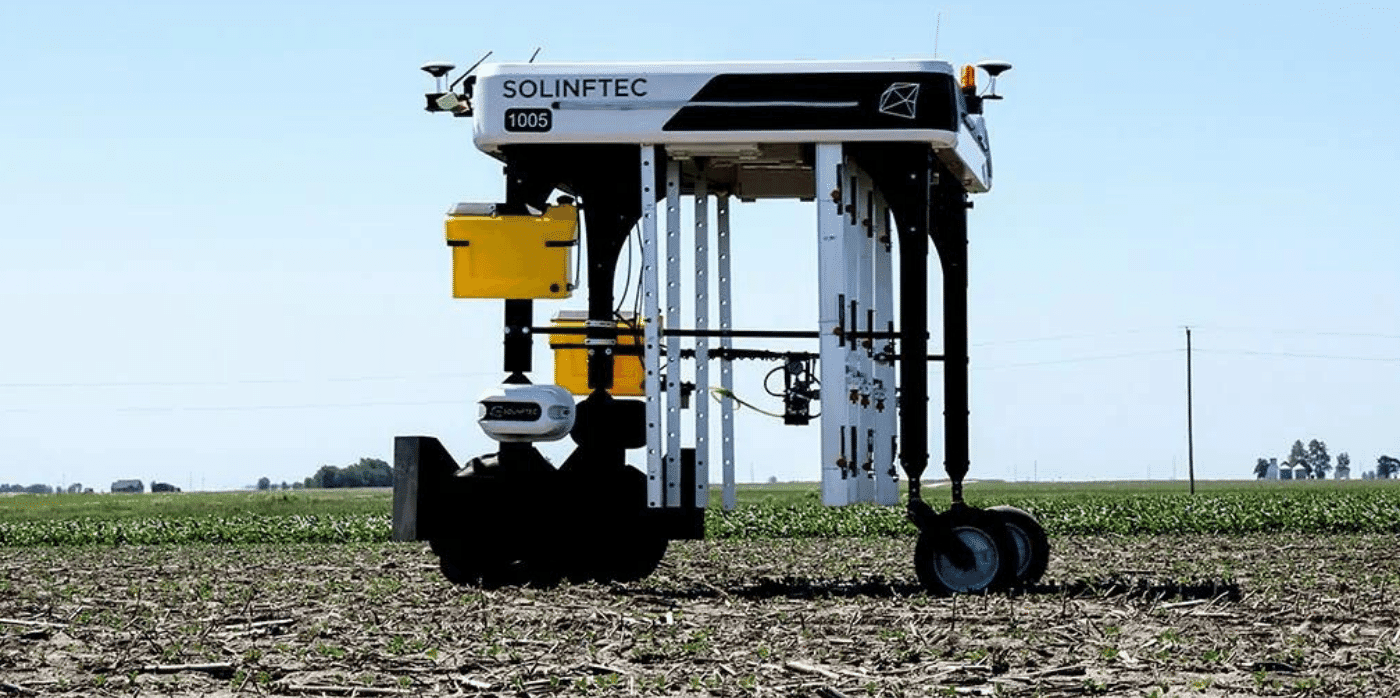
Spotted: Pesticides are widely used in agriculture in order to protect crops from pests and diseases. However, even at levels deemed safe by regulators, pesticides can have a negative impact on the environment. Studies have shown that pesticides can cause a loss of biodiversity, including reduced numbers of beneficial insects, as well as birds, and amphibians. In addition, pesticides can contaminate soil and water, and may also pose a risk to human health. As a result, there is an increasing focus on finding ways to reduce the use of pesticides in agriculture. One promising approach is the use of robotics, as they can be used to target pests more accurately, which in turn reduces the amount of pesticide required. Among the companies working on this is Solinftec, a company that recently developed a robot that can provide autonomous and sustainable spot-spray applications on growers’ fields.
Solinftec partnered with McKinney Corporation to introduce the new Solix Sprayer robot. This technology has the potential to help producers reduce chemical inputs and deliver a lower carbon footprint. In addition, the robot provides reports on crop populations, weed densities, disease and insect identification, nutrient deficiency identification as well as other layers of data maps for analysis. And best of all, all of this activity is powered by four solar panels.
“Weed detection is a leading issue in fields across the North America and the Solix Sprayer is designed to not only monitor and scan fields like the original scouting version, but detect and manage weeds with technology which allows the device to spot-spray into the plant instead of from above, eliminating drift and soil compaction caused by larger machines and help lower environmental impact,” explains Leonardo Carvalho, Solinftec’s director of operations.
Solix is currently piloting the robot in North America in partnership with the agricultural co-operative GROWMARK and Purdue University in the US, and Stone Farms and University of Saskatchewan in Canada. The technology is simulated to become commercially available to the entire agricultural market in 2023.
As the world population continues to grow, it is essential that we find ways to sustainably increase food production. Other similar innovations spotted by Springwise include a new way to produce sustainable fertiliser on site and a biohacking method that protects crops against fungal attack.
Written By: Katrina Lane

